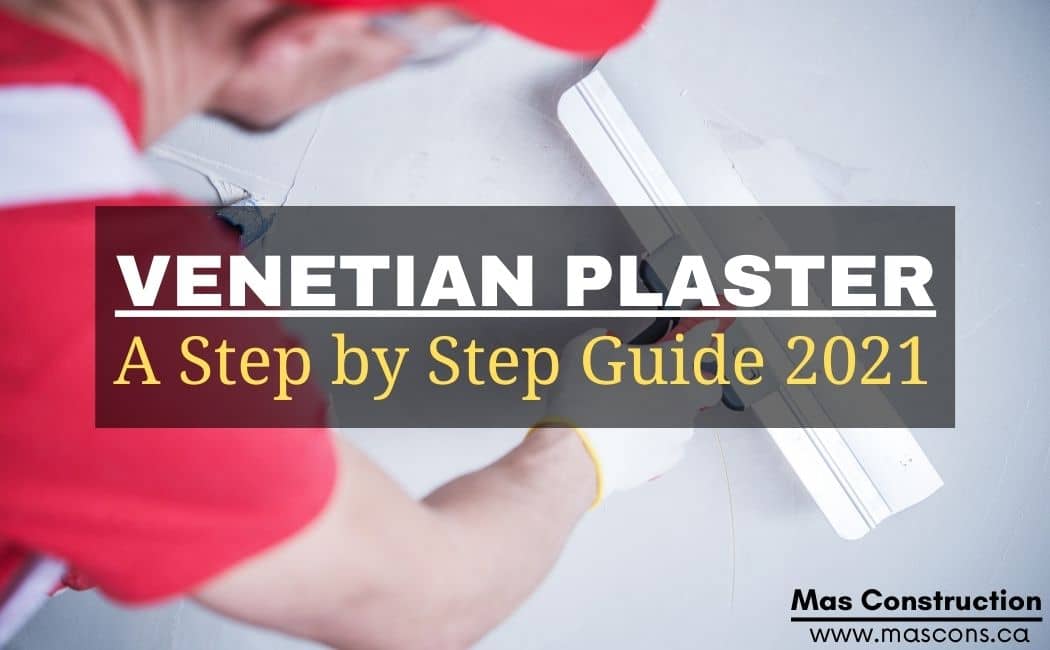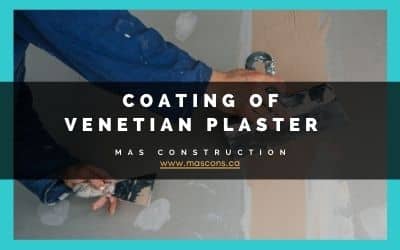Venetian Plaster – A Step by Step Guide 2021

Venetian plaster is a modern term that describes an ancient stucco plaster. Traditionally, it has achieved its effect through the use of unique materials by a skilled craftsman.
Fortunately, it has allowed DIY enthusiasts to create similar results in just a few steps and without special training.
You can find Venetian plaster at paint stores. Whereas it comes in gallon cans, just like paint.
Some products are already tinted. Others require you or your dealer to add universal dyes to achieve the desired color.
Venetian plaster tools

The benefit of Venetian plaster is that you don’t have to buy a lot of tools and materials to get the job done.
At the bare minimum, you will need the following tools:
- 4-6 inch steel trowel or drywall knife
- Sandpaper
- Venetian plasters itself
Depending on the condition of the part. The type of work you are doing, you may need tools:
- Gloves
- Eye protection glasses
- Protective canvas
- Brush
- Roller
- Roller cover
- Paint tray
- Universal dyes
- Topcoat or paste
Practice with Venetian plaster
It is very different from painting. Knowing how to paint a room does not automatically make you proficient with it. The painting contractor toronto who has done plaster many times.
A Little time spends practicing with the tools will help you gain confidence as well as skills.
A good way to practice is to buy a few sheets of drywall. Then apply the plaster with a steel trowel using different strokes and different angles.
Experiment by creating different amounts of texture on the surface. In addition, if you are adding your shade to the plasters, mix.
Small batches with varying amounts of dye (taking notes as you do) until you find the right mix.
Prepare your room for apply Venetian plaster

Clear the room as much as possible. Spread a trap on the floor.
If there are any cracks or holes. Fill it properly otherwise after the final plaster coating it will tear apart from that crack.
Wash off the dirt and grease. Surfaces should be primed or coated with paint.
Glossy paint surfaces can be covered with plasters till you lightly sand the wall to remove the shine.
Carefully read the instructions on the Venetian Plaster box for… NO more additional prep requirements.
Using tools like steel trowels as well as drywall knives can have sharp angles that can leave marks and scratches on the plasters. To avoid this problem, first thing to remember is round the corners with 100 grit sandpaper.
You can wear gloves when mixing, applying the cast. As this can irritate the skin. Protective goggles should also be worn.
First coating of plaster
Open the box of plasters and, if necessary, add the tint. Mix all the ingredients well and make it think, not too liquid not too solid.
Start from the corner of the room.
Apply the sealer with a flexible steel trowel (painting contractor also suggest 4 to 6-inch drywall knife).
Apply a thin layer of plasters; at the same time hold the steel trowel at a 15 to 30-degree angle. Distribute the plaster with varying lengths and angles of strokes.
Don’t worry about covering every square inch evenly.
Let some of the original plaster wall surfaces show through the stains, but keep the surface reasonably smooth sleek.
Clean the trowel from time to time to prevent the dried platter from getting into your Plaster finish.
Wait for it to dry completely (approximately four hours) before applying the next coat.
Second coating of plaster

Use the same color of applying plasters for the second coat. Hold the steel trowel at a 60 to 90-degree angle, apply the plaster’s thin coat. Use long and short overlapping strokes (X-shaped).
Carefully cover the surface, fill in any voids, and eliminate high areas.
Allow the plaster to dry for at least 24 hours before proceeding to go to the finishing step.
Venetian plasters final finish touch
The final step is the finished job involves burnishing the surface, and possibly applying the topcoat.
The top of coat plaster will add durability to the surface and is particularly recommended for rooms with high humidity (like bathrooms) and high traffic.
However, if you do decide to use a topcoat, be sure to choose a product that is recommended by a professional painting contractor that is specifically recommend for the brand of plasters you used.
To polish, rub the surface with very fine sandpaper (400 or 600 grit) in a circular motion. Clean the surface with a damp cloth.
The topcoat is usually applied with a trowel shortly after the plaster dries. The topcoat may darken the color a bit.
Once dry, you can polish the surface again with the flat side of a clean steel trowel or putty knife.
You can also create a good shine and add protection to the surface by using paste wax for the topcoat.
Apply a thin layer of wax with a trowel, and then polish the surface by rubbing it with the side of the trowel.
FAQ About Venetian Plaster
Can Venetian plaster be used in a shower?
For a bathroom and a kitchen, such a material should not be used.
Is Venetian plaster expensive?
Yes, unfortunately, It is a bit expensive, but its look justifies its money.
Is Venetian plaster out of style?
Maybe or maybe not, in short, it is an old technique of enhancing the look of your building. Today we have a much cheaper and fast alternative to make the home beautiful. But at the same time, it has, its own charm.
Useful recommendations
The choice of plaster is a matter of taste. It tends to resemble the texture of stone, pearls, surfaces covered with leather, wood, as well as fabric.
If you wish… then the texture can be corrected or even modified. The plaster walls or ceiling may become dull or shiny. Consider the purpose of the room, the style you want to change.
If you want to finish the metal with plaster, first thing to remember you will need to treat it with synthetic resins to prevent corrosion. Over time, it will become partially visible even through the translucent plaster layer.
The final wax coating is necessary to ensure moisture resistance. It is used in bathrooms, or kitchens after the plaster is finished.
The only caveat here – keep in mind that wax tends to darken over time, so avoid too much.
Another advantage is the ease of selecting the desired color and texture for your furniture.
We are experts in all aspects of decorative plastering and special plastering techniques. If you have professional requirements, you can hire Venetian plaster, Mas Construction will be happy to help. Call us on +1 647-835-0590 to discuss your project.
Thanks for reading the article I hope you’ll get understand about Venetian plastering process. Hire today the Expert of Venetian Plaster Toronto – Mas Construction.
